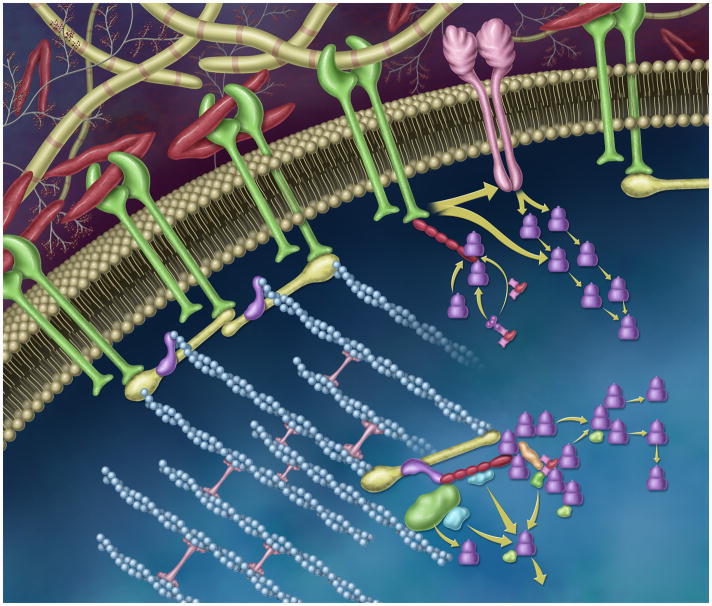Figure 2.
Dynamic and reciprocal signaling through the integrin- and growth factor receptor-rich plasma membrane. In this stylized representation, integrins (membrane-spanning proteins shown in green) bind to extracellular matrix components such as fibronectin (red “v”s) and collagen (yellow striped rods). The cytoplasmic tails of the integrin receptor directly interacts with the cytoskeleton via talin (yellow), vinculin (purple), and filamentous actin, blue). Through these dynamic protein-protein interactions, mechano-chemical signaling cascades are initiated and propagated, which modulate cell adhesion, shape, polarity, cell proliferation and migration. These reciprocally-regulated interactions can influence gene expression via effector and adaptor pathways. Molecular components, here, include members of the focal adhesion complex, including paxillin (shown in red), Crk, Cas, and the focal adhesion kinase, FAK. FAK and src can signal ‘downstream’ via linked effector pathways (e.g. shown as green, blue, and purple shapes). Integrins can also laterally interact with growth factor receptors (membrane-spanning protein shown in pink) via the MEK1 pathway (shown as purple stacked cylinders).

